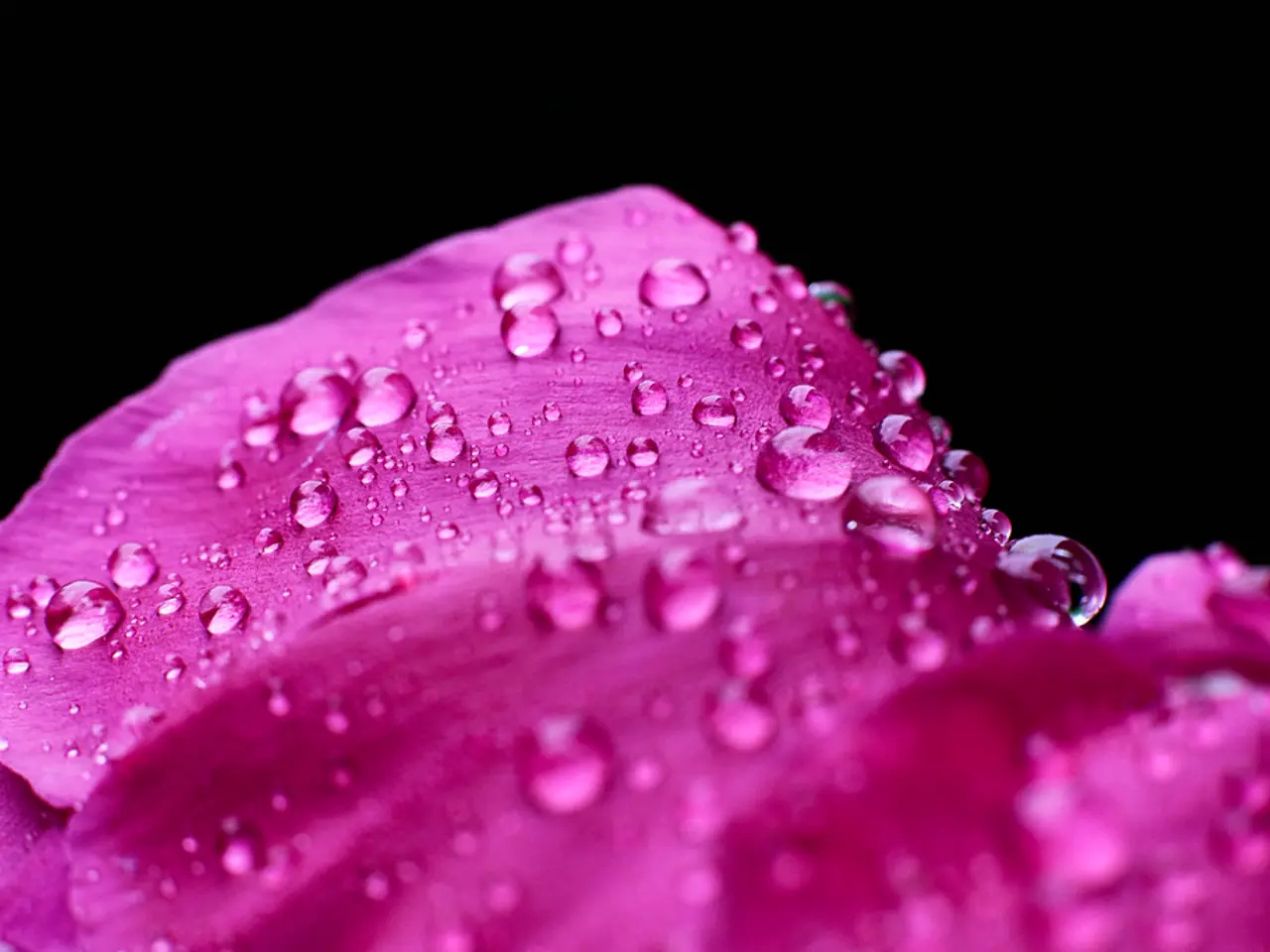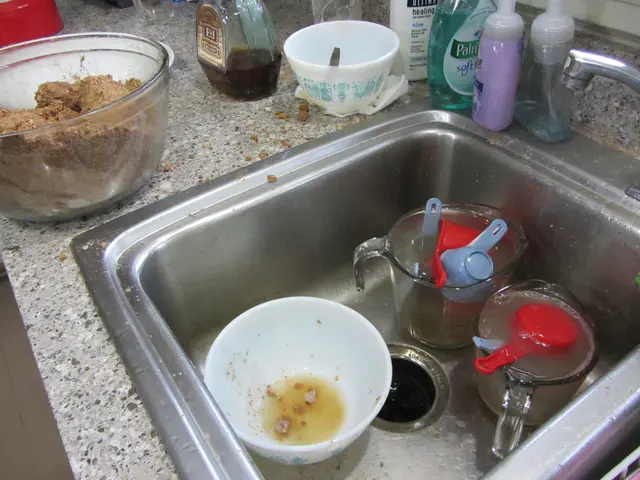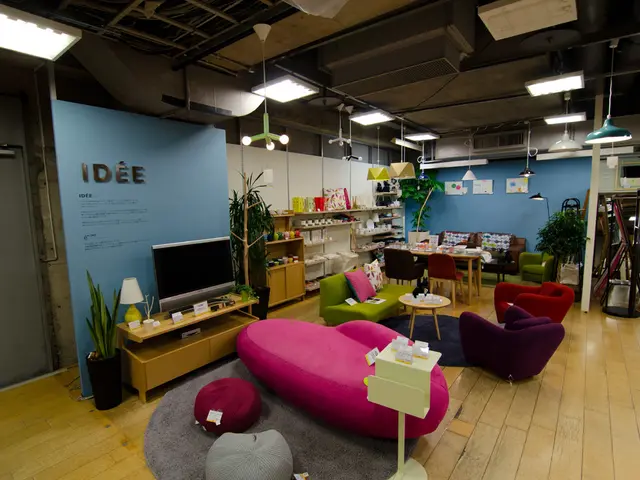Advocating for Drip Irrigation as a Key Factor in Achieving Sustainable Flower Cultivation
In the world of floriculture, a revolutionary watering system is making waves. Drip irrigation, a highly efficient method that delivers water directly to plant roots, is proving to be a game-changer, especially in regions facing water scarcity like Kenya's Lake Naivasha.
This innovative system boasts water-use efficiency of up to 90-95%, significantly outperforming traditional flood or furrow irrigation systems that manage only 30-70% efficiency. This substantial increase in efficiency means less water is wasted through runoff, evaporation, or deep percolation.
In the floriculture sector, drip irrigation not only conserves water but also enhances crop quality and yield. For instance, roses irrigated by drip tend to have larger heads, longer stems, and negligible surface runoff. Carnations show dramatic yield improvements when drip-irrigated daily versus less frequent flood irrigation. Chrysanthemums achieve the best water-use efficiency and flower counts with precise drip irrigation, while Alstroemeria plants grow taller and produce more cut stems with drip irrigation than with sprinkler systems.
Beyond water savings, drip irrigation promotes sustainability by reducing the microclimate conditions that encourage fungal diseases such as botrytis and powdery mildew. This leads to lower fungicide use and reduces pest pressure (thrips, mites), which also benefits labor efficiency since flowers can be harvested sooner after irrigation.
In the Lake Naivasha basin of Kenya, where floriculture is a major water consumer and water resources are under stress, adopting drip irrigation is essential for sustainable management. The system’s precision not only saves water but also supports healthier plants and better economic returns through premium flower quality.
However, challenges such as maintaining proper water pressure and preventing emitter clogging exist but are manageable with appropriate system design and maintenance practices.
In summary, drip irrigation in floriculture:
- Significantly reduces water use (up to ~90-95% efficiency) - Improves flower yield, size, and uniformity - Reduces disease and pesticide use - Supports sustainability in high water demand regions like Kenya’s Lake Naivasha
This makes it a key technology for sustainable floriculture under water scarcity conditions. Drip irrigation pairs well with rainwater and recycled sources, turning waste streams into a reliable, low-cost supply. In Kenya's Lake Naivasha, cut flowers account for approximately 41% of the basin's total water footprint.
Drip irrigation also reduces labor requirements in irrigation by up to 70%, particularly in flower blocks with valve automation. The compatibility with fertigation allows for the delivery of dissolved nutrients in small, frequent doses exactly where roots can absorb them.
The floriculture industry's sustainability relies heavily on reducing water consumption. Early adoption of water-efficient approaches like drip irrigation can lock in long-term resource security and realize tangible cost, yield, and quality gains. Modern drip systems can cut total irrigation volumes 40-60% in ornamentals while maintaining or improving yield.
Moreover, drip irrigation in desert forage crops leads to 59% lower CO2 and 38% lower N2O emissions per ton of yield compared to furrow irrigation. Energy savings from drip irrigation can result in electricity bills being cut by a third or more. A single cut rose stem typically requires between 7 to 13 liters of water. Precision moisture in drip irrigation leads to measurable production benefits across various cut-flower crops.
The Floriculture Sustainability Initiative (FSI) has water-efficiency metrics implemented through its programs like Florverde Sustainable Flowers and MPS. Sensor-driven scheduling with tensiometers or capacitance probes and automated valves can ensure irrigation only when needed.
In conclusion, drip irrigation offers a promising solution to the water scarcity challenges faced by the floriculture industry, promoting sustainability, conserving water, and enhancing crop quality and yield.
- In the global floriculture sector, the adoption of drip irrigation, a highly efficient watering system, is making significant strides, particularly in regions like Kenya's Lake Naivasha, where water scarcity is prevalent.
- This innovative system, which delivers water directly to plant roots, offers water-use efficiency of up to 90-95%, far surpassing traditional flood or furrow irrigation systems.
- The increased efficiency in water usage, resulting in less water being wasted through runoff, evaporation, or deep percolation, is a major advantage of drip irrigation.
- In the floriculture industry, drip irrigation not only conserves water but also enhances crop quality and yield, as observed in plants like roses, carnations, chrysanthemums, and Alstroemeria.
- By reducing the use of fungicides and pesticides, drip irrigation promotes sustainability in high water demand regions, and supports healthier plants and better economic returns.
- In the Lake Naivasha basin of Kenya, where floriculture is a significant water consumer and water resources are under stress, incorporating drip irrigation is crucial for sustainable management.
- The industry's sustainability is reliant on reducing water consumption, and early adoption of water-efficient strategies like drip irrigation can ensure long-term resource security, while also realizing tangible cost, yield, and quality gains.
- Drip irrigation, paired with rainwater and recycled sources, can turn waste streams into a reliable, low-cost supply, making it a key technology for sustainable floriculture under water scarcity conditions.




